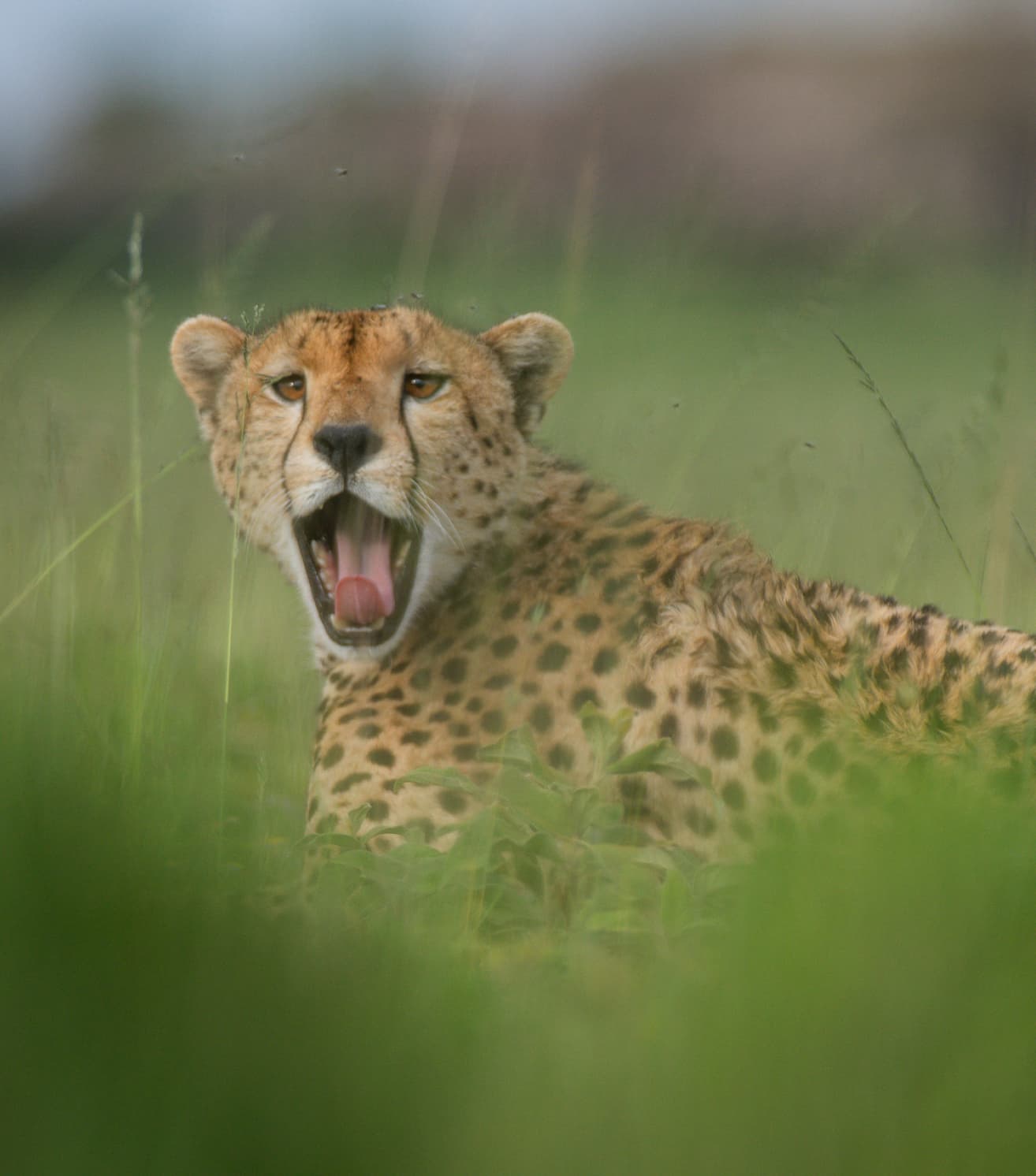

Understanding the Great Migration
David Attenborough wrote, “The Serengeti is a living, breathing masterpiece – a symphony of life that fills us with wonder and awe.” Nothing represents this more than the annual Great Migration of hundreds of thousands of animals across the vast plains to the Mara River and their return.
A World of Wildlife Wonder
As one of the last natural ecosystems featuring mega diversity and abundant wildlife, the Serengeti offers one of the most incredible wildlife spectacles in the world. It is synonymous with the Great Migration – an annual journey of millions of Wildebeest and other herbivores across the plains, covering a distance upwards of 1000 km, following the rain and fresh pastures.
The intricacy of this complex ecosystem, the nuanced interplay of multiple ecological factors and species of flora and fauna are the main draw of this magical place.

Following Food and Water
The availability of food and water triggers the Great Migration in which Wildebeest, Zebras and Thomson’s gazelles move in search of fresh grass and water sources. The rainfall patterns in the region largely determine the availability of these resources that are all critical for survival.
In the Serengeti the highly variable rainfall patterns can change the timing and intensity of the rainy seasons. This variability means that the actual pattern the Great Migration takes each year also differs each year.
The soil types and depth in the Serengeti are also critical for the Great Migration. The soils in the Serengeti are generally nutrient-poor and have a low water-holding capacity which makes them unsuitable for agriculture. However, the short grasses that dominate, such as the Sporobolus and Kyllinga species, are well adapted to the shallow volcanic soils and provide a rich source of nutrients for herbivores during the wet season.

Green Season in the South (Dec – Apr)
During the wet, Green Season the herbivores spread across the Southern plains, grazing on the fresh grasses. The predators, such as Lions, Cheetahs and Hyenas, take advantage of the abundance of prey and their hunting success rates increase with the abundance of game. The Wildebeest begin their calving season in late January, taking advantage of the abundant food and water resources. As a result, the Wildebeest calves are born in large numbers with approximately 400 000 births occurring in January and February.
Esirai Camp’s Green Season location near Naabi in the centre of the short grass plains has been chosen to offer the best wildlife experience in that season. For me, this is the best time to visit the Serengeti and there is little doubt that it is during this time that the most incredible wildlife experience can be witnessed and enjoyed. As the wet season ends, the plains dry out and the herbivores move toward the northwest in search of greener pastures and water sources. The Wildebeest calves have grown stronger and can keep up with their mothers as they move toward their new feeding grounds. During this time the Wildebeest go through their annual mating event. Olmara Camp offers superb wildlife viewing as Cheetahs drop their cubs and the Thomson Gazelle migration occurs on the eastern plains. It is a time of plenty to be enjoyed in comparative solitude.

Dry Season Crossing (Jun – Oct)
During the dry season, the grasses have dried out and the herbivores must move long distances to find food and water. As a result, the Wildebeest and Zebras start moving towards the Northern Serengeti where the grasses remain green throughout the year because of higher rainfalls. The drying grasses offer lower nutritional values and to find sufficient nutrition, the herds must constantly seek the green flush that follows local showers. This keeps them on the move for months. On the other hand, Gazelles move towards the north-eastern woodlands of the Serengeti where they can find suitable food and water resources.
The movement of the herbivores during the dry season is critical for the regeneration of the grasses, as it allows the grasses they leave behind to recover from the heavy grazing pressure they experienced during the wet season. During this period, the predators become more concentrated in specific areas as they follow the herbivores. Lions in particular depend more on the Wildebeest as a food source. Also, during this time Wildebeest and Zebra must cross the crocodile-infested Mara River, making this part of the Migration particularly dangerous.
Esirai Camp’s dry season location near the Gardenia Stream in northern Serengeti has been chosen to offer the best wildlife experience. In addition, this location provides excellent access to the Mara River crossing action and superb access to off-the-beaten-track walking trails and game drive circuits.

Short Rain Season (Nov – Dec)
The short rain season in the Serengeti is a brief period of rainfall that occurs from late October to early December. It is an unpredictable season with rains sometimes absent and occasionally falling earlier or later than is typical.
The herbivores move back south, following the green shoots that have started to sprout. The Wildebeest and Zebras begin to congregate in the southern plains of the ecosystem where the grasses are the most nutritious. The predators follow and there is a general mass movement toward the south.As the herds move along the eastern boundary of the Serengeti, mixing with the rich resident wildlife, Olmara Camp offers superb wildlife viewing.

While the Great Migration is a primary factor of the ecosystem and the most famous, it is by no means the only one. Throughout the year we will look at other unique aspects of this precious ecosystem. So, stay connected and informed through our Entara Blogs.


Termites – the Monitors and Masters of Soil Health

Entara Guides thrive at ‘Bush School’








